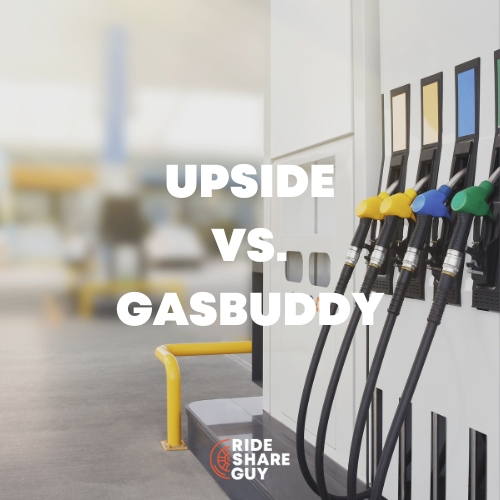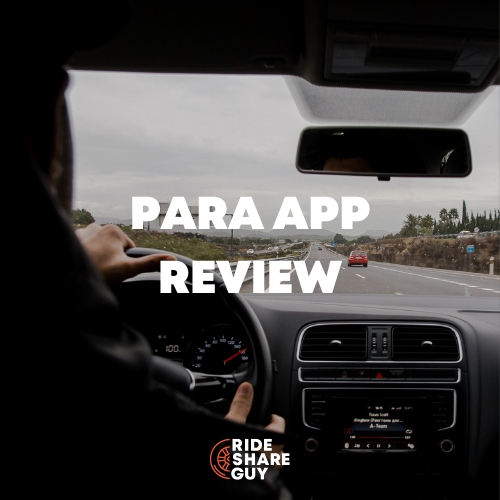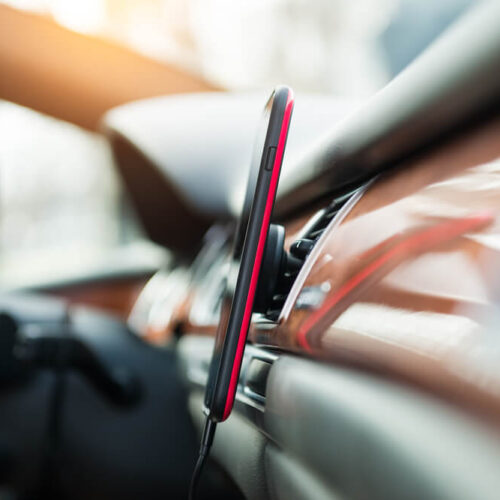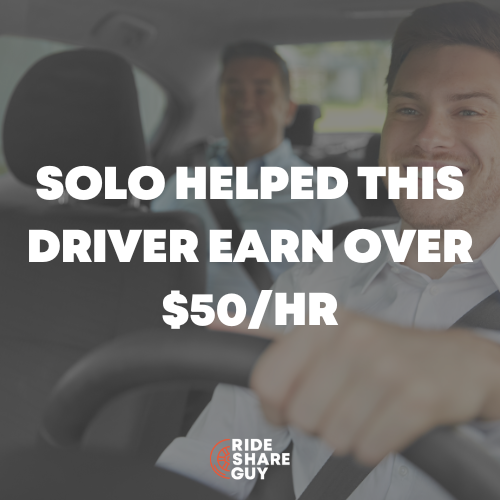In select metro areas around the country, Uber has begun offering Uber Wheelchair Accessible Vehicle (WAV) rides in a service called Uber WAV.
This article will cover everything drivers need to know about Uber WAV: markets where it’s currently available, how to join the program, benefits, and expectations.
We’ll also go over the most common related questions that drivers have about wheelchair-accessible Uber rides.
What is Uber WAV?
Like Uber X (the “regular” Uber rideshare app), Uber WAV offers a safe and affordable way to get a lift somewhere. WAV vehicles are designed to provide transportation services to riders in a wheelchair.
Since being launched in 2014, Uber WAV has grown slowly but significantly throughout U.S. markets. In cities with Uber WAV, the service has become one of the most popular transportation methods for riders with accessibility issues. In the state of California, Uber is the most popular, on-demand WAV ride service.
Not only does Uber WAV offer a more convenient and affordable ride than most other special assistance options, riders can book a ride up to 30 days in advance. This feature makes it much easier for riders to ensure they will have transportation for medical appointments and other important meetings.
Uber has collaborated actively with several disability organizations, including the National Disability Rights Network (NDRN), on how to safely design this program and provide the best service to riders. This includes enhanced security protocols and advanced GPS tracking.
How Does Uber WAV Work?
You can hail an Uber WAV in the regular Uber app, or on the Uber website from your laptop, a tablet, or by using the mobile browser on your phone.
Request a ride on the Uber platform, and select your pick-up location and drop-off destination. When selecting the type of Uber ride, scroll down to Uber WAV. If WAV is not on the dropdown list in your city, this means WAV is not yet available in your market.
Uber WAV riders can add multiple stops on their ride when booking the trip and also have the option of booking a round trip.
Uber WAV Requirements for Drivers
To drive for Uber WAV, you must meet specialized criteria beyond the normal requirements for becoming an Uber driver.
- Have a wheelchair-accessible vehicle equipped with a ramp or lift. (Drivers in WAV markets have the option of renting a WAV vehicle.)
- Complete specialized training on how to assist wheelchair riders entering and exiting the vehicle and wheelchair securement.
This does include an in-person WAV safety training that may be as far away as 40 miles.
How to Drive with Uber WAV
It’s a fairly fast process to sign up and start driving for Uber WAV.
- Meet the Uber driver
- Obtain Passenger Service and Safety (PASS) or other similar certification. (Uber directs you through the process.)
- Complete Uber accessibility training.
- Have or obtain a wheelchair-accessible vehicle. Many drivers rent WAV vehicles through Hertz or other rental companies.
- Opt-in to receive WAV trips in the Uber driver (You may also receive UberX or UberXL WAV trip requests, or even sign up for Uber Eats too for that matter.)
Eligible WAV vehicle models include Toyota Pilot, Toyota Sienna, Nissan NV200, Chrysler Town & Country, Mercedes-Benz Metris, Dodge Grand Caravan, Honda Odyssey, Ford Transit Connect, and other vehicles that have been properly retrofitted.
Uber WAV vs. Uber Assist
Uber WAV and Uber Assist are similar ride services as they provide affordable transportation to passengers with limited mobility. But they are not the same thing.
The core difference is:
- Uber WAV vehicles must be wheelchair accessible for passengers in non-folding wheelchairs
- Uber Assist vehicles are required only to accommodate walkers or folding wheelchairs
Both WAV and Assist drivers, however, are required to receive additional training to assist limited-mobility passengers when entering and exiting vehicles.
Uber Assist has a very limited presence in U.S. markets. It appears the rideshare app is choosing to phase out Uber Assist to instead focus on expanding its WAV service.
Uber Assist was introduced in the U.S. in 2015 in Los Angeles and other select markets but since then there has been limited information about Uber Assist in the U.S. Our editorial team attempted to find more information about Uber Assist U.S. on the Uber website and was directed repeatedly to search pages for Uber Assist in Australia, Canada, the United Kingdom, and other international markets.
Our editorial team also checked the availability of Uber Assist in 25 of the largest U.S. cities and found Uber Assist was only available in five (5) of those metro areas: Phoenix, San Diego, San Jose, San Francisco, and Las Vegas.
- Los Angeles (WAV, No Assist)
- New York City (WAV, No Assist)
- Chicago (WAV, No Assist)
- Philadelphia (WAV, No Assist)
- Phoenix (Uber WAV, Uber Assist. Same rates for both.)
- Miami (No WAV, No Assist)
- Houston (No WAV, No Assist)
- San Diego (Uber Assist, Uber WAV. Same rates for both.)
- San Jose (Uber Assist, Uber WAV. Same rates for both.)
- Dallas (No WAV, No Assist)
- Seattle (*Limited WAV, No Assist)
- Indianapolis (No WAV, No Assist)
- Columbus (No WAV, No Assist)
- Detroit (No WAV, No Assist)
- Atlanta (*Limited WAV, No Assist)
- Austin (WAV, No Assist)
- Jacksonville (No WAV, No Assist)
- Charlotte (No WAV, No Assist)
- Oklahoma City (No WAV, No Assist)
- Baltimore (No WAV, No Assist)
- Washington D.C. (WAV, No Assist)
- San Francisco (Uber Assist, No WAV)
- Las Vegas (Uber Assist, *Limited WAV)
- Boston (WAV, No Assist)
- San Antonio (No WAV, No Assist)
*In these cities, the WAV option is listed but no rates are published and the ride option was marked temporarily “unavailable.”
Frequently Asked Questions
Where is Uber WAV?
Uber’s website states right now WAV is being piloted in a handful of cities in North America and is available in four (4) markets: Chicago, New York City, Philadelphia, and Washington D.C.
However, in checking WAV’s availability across 25 of the largest cities in the U.S., our editorial found that WAV is available in 13 of the country’s largest metro areas.
- Los Angeles (WAV is 12.5% less than Uber X)
- New York City (No change)
- Chicago (WAV is 14.3% less)
- Philadelphia (No change)
- Phoenix (WAV is 18.8% more)
- San Diego (No change)
- San Jose (No change)
- Seattle (*No change)
- Atlanta (No change)
- Austin (WAV is 3.6% more)
- Washington D.C. (No change)
- Las Vegas (No change)
- Boston (No change)
Does Uber WAV pay drivers more?
Uber takes the same 25% commission from WAV drivers as it does from all Uber drivers. In terms of any fare differences, drivers have mixed feedback. Some sources say that Uber WAV trips cost a little bit more because of the additional time and customer assistance required. Others state that Uber WAV trips don’t pay any more than an Uber trip.
Uber cannot charge Uber WAV riders more than other Uber passengers, in order to comply with the Americans with Disabilities Act (ADA).
When our editorial team reviewed the rideshare fares for different Uber rides across 13 U.S. cities offering WAV, we found that WAV costs less in two (2) cities but costs the same or more in all other markets.
One WAV driver tells Rideshare Guy readers that she makes more driving for Uber WAV than Uber X because passengers are more grateful and leave better tips.
Can UberXL accommodate wheelchairs?
UberXL vehicles are SUVs or minivans. They must be large enough to accommodate 6 to 7 passengers and large belongings such as luggage or a folding wheelchair.
While UberXL vehicles can usually accommodate a manual wheelchair, this is neither a requirement nor a guarantee. The ride is geared more around extra space for passengers (with no special mobility requirements) than for oversized gear.
What are some alternatives to Uber WAV?
In addition to Uber WAV, there are other gig or regular work options for drivers.
Chicago Centralized WAV Taxicab Dispatch Service
The city of Chicago has an Accessibility Fund to encourage and subsidize taxi services for limited mobility residents.
WAV taxicab owners are eligible for annual subsidies of up to $9,000 for vehicle maintenance. Additionally, every year five (5) WAV taxicab drivers are recognized for driver excellence and are awarded a free taxicab medallion license.
Chicago also offers reimbursement subsidies for drivers who pay to lease and drive WAV taxicabs. Drivers are eligible for a $25 subsidy per 12-hour lease or a $50 subsidy per 24-hour lease.
For existing taxi medallion owners, the city offers a subsidy of up to $35,000 toward the purchase of a qualifying, factory-built vehicle. This is a lucrative incentive for drivers to choose WAV over other options.
New York City Taxi and Limousine Commission (TLC)
The New York TLC pays drivers an extra $1.00 per trip in a wheelchair-accessible yellow or green taxicab. Additional funds earned are deposited onto a TLC prepaid debit card.
In a similar scheme, the T LC’s Taxi and Improvement Fund (TIF) and Street Hail Livery Improvement Fund (SHLIF) offer eligible yellow and green WAV taxicabs a one-time $100 sign-up bonus for completing their first 20 WAV trips.
Lyft
Rideshare competitor, Lyft, also offers WAV rides to passengers. Like Uber, Lyft is figuring out how to expand accessible rides nationwide, but for now, the ride-hailing app’s website states that it has WAV service in Toronto (Canada), Boston, Chicago, Dallas, Philadelphia, Los Angeles, New York City, Phoenix, Portland (OR), and San Francisco.
City Transit Driver
Nationwide, public transportation programs are strapped for drivers. Virtually all city buses are equipped to give wheelchair-accessible rides, accommodating motorized wheelchairs, scooters, and other mobility-device or wheelchair users.
While it’s not the same flexible, side hustle as giving Uber WAV rides on your own schedule, the pay, perks, and training can be outstanding.
According to the Bureau of Labor Statistics (BLS), the average bus driver earned $25.92 an hour in 2022. And in some markets, according to Indeed, drivers can earn as much as $43 per hour.
What are the perks of being an Uber WAV driver?
The Uber WAV service offers certified drivers many perks.
- More trips: WAV drivers can drive for UberX and UberWAV. Commonly, these wheelchair-accessible vans and SUVs can also drive for UberXL and Uber Assist.
- Subsidies: Cities are exploring incentives to encourage rideshare drivers to retrofit their vehicles or purchase a new vehicle for wheelchair accessibility.
- Uber incentives: Uber will offer WAV-specific quests and promotions for its drivers. These bonuses can vary by area, but in the Boston area requests have included $200 for doing 50 WAV rides or a $15 bonus per every completed WAV ride.
- Better tips: This might be debatable, but some WAV drivers feel they earn better tips from WAV passengers than Uber X With limited options and long wait times, WAV riders are often more grateful to be getting affordable, on-demand transportation.
- Feel-good vibes: Many WAV riders truly feel great about offering this community service to underserved residents.
Driver’s Take
If you live in a market offering Uber WAV, in the USA or beyond, it’s a great way to provide a much-needed service to riders often overlooked. There are more trip requests, special WAV bonuses, and often happier passengers who leave more generous tips.
Even if you don’t have a WAV vehicle or the ability to purchase one, many drivers are able to rent a WAV vehicle and still find it more profitable than doing other types of Uber rides with their own personal car.




